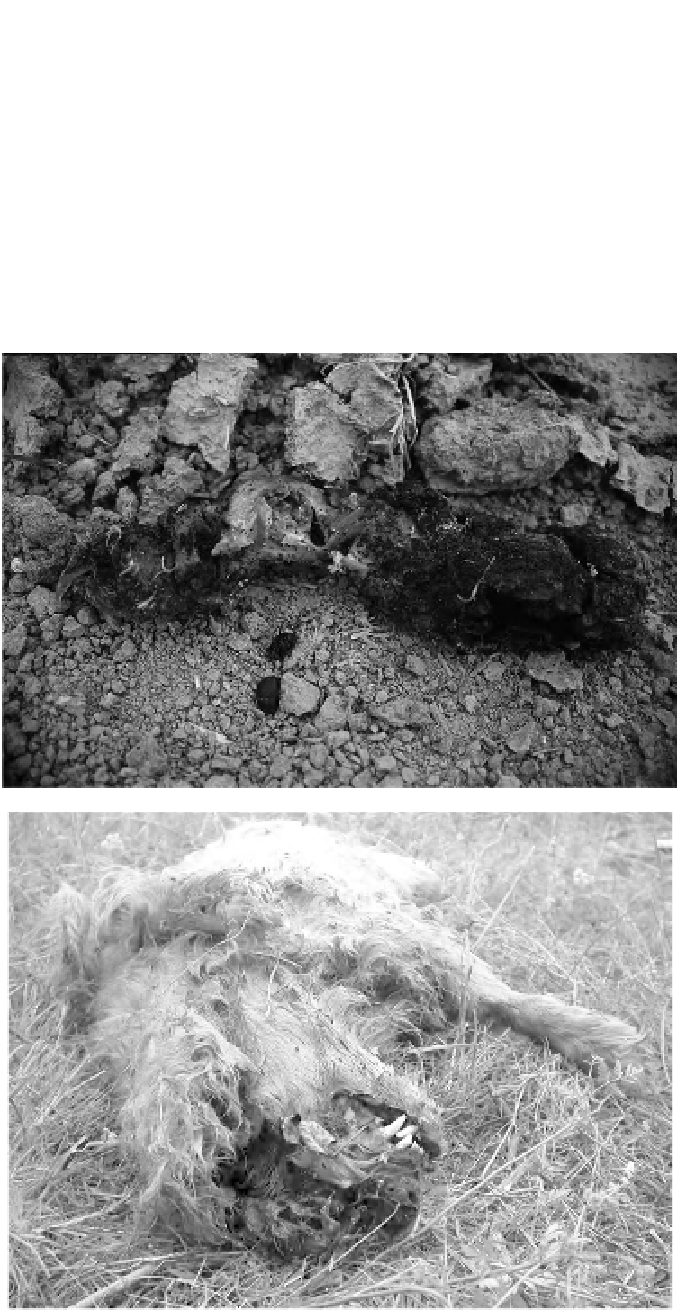Environmental Engineering Reference
In-Depth Information
If the CAD does not detect poison but we still strongly believe, on the basis of forensic fi nd-
ings at the site, that the cause of death was poison, then we submit the samples to two different
laboratories in Spain for further analyses with more powerful techniques. In 2010, poison was
detected externally, in 38% of baits/carcasses not detected in our laboratory. Samples would be sub-
mitted externally, for example, due to the presence or absence of certain insect species (see Figures 5.7
and 5.8), their distribution on the carcass, and a fi nding of dead insects near the digestive tract, which
can all be indicative of poisoning. Body posture (e.g., clenched talons, facial grimace) are also highly
diagnostic (see Figures 5.9, 5.10, 5.11). Poisonings that stem from anger or that are carried out by
inexperienced offenders are usually more easily detected, by virtue of the fact that an excessive
amount of compound tends to be used. By contrast, professional poisoners typically use very small
doses of a single toxin, which is naturally more diffi cult for us to detect.
Figures 5.7 and 5.8
The presence or absence of certain insect species can indicate poisoning occurred




























Search WWH ::

Custom Search